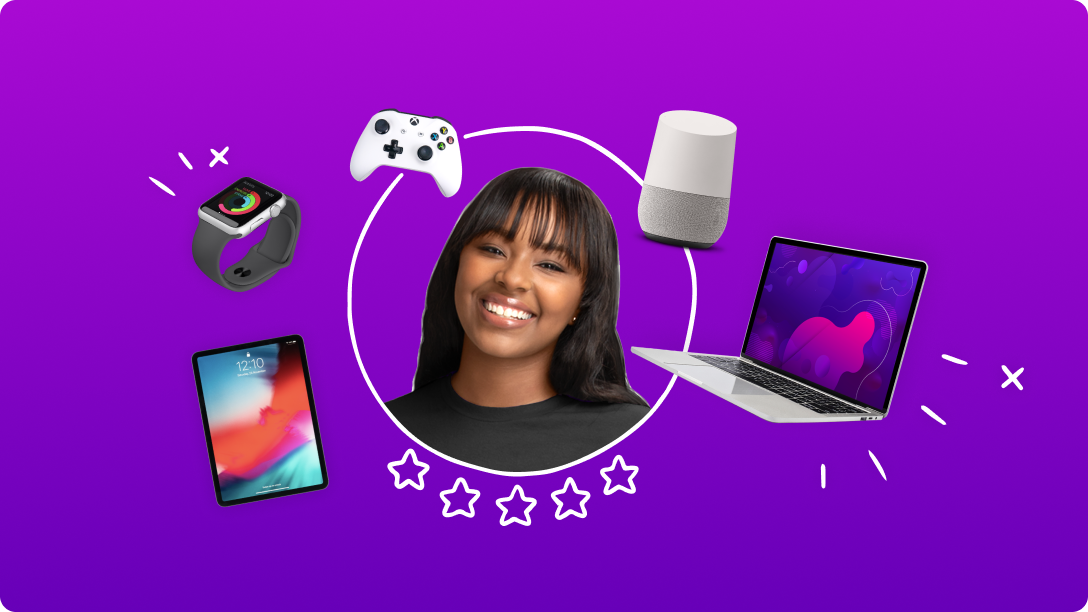The kids are in the driver’s seat
One of the most surprising and accurate predictors of what tech people buy that we uncovered is whether respondents live with children. Households with kids tend to buy more tech than those without kids. Let’s look at this phenomenon:

Parents adopt new tech quickly
Caretakers do too. While most people tend to wait until new tech is popular before they try it (39%), those with children are often either the very first (22% vs. 16% of all people) or among the first (29% vs. 23%).

They already have 10 devices
People with kids are far more likely to own a number of smart devices—like tablets, smart watches, smart TVs, and home security devices—than those without kids. They’re also twice as likely to own a gaming console and a VR/AR headset.

People with kids make plans
Far more people with kids intend to make a first-time purchase of an entertainment system, smart home device, or smart appliance than those without children. In fact, 1 in 4 consumers with kids will buy a smart appliance in the next 12 months.

The motivations are different
When it comes to motivation for buying tech, there are big differences between the kids vs. no kids groups. More people with kids buy tech for a smart home transformation, school, and environmental reasons, than those without kids.
Why are kids driving tech consumption?
Here’s why having children in your household often predicts the way you buy and use tech:
Living with children helps adults stay up to date with the latest devices. The kids demand it.
Adults are looking to technology to help them both “entertain” and “educate” their kids.
Adults want to keep up with tech to give their children a strong grounding in tech fluency.
Adults are tasking kids with either influencing or making tech decisions in the household.
Adults are turning to tech to give them back a little time from their hectic daily schedules.
In most child-rearing homes, the parents are likely Millennials or a younger demographic.
